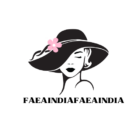Drawing a cat can seem like a daunting task, especially for beginners. But don’t worry, it’s not as complicated as it might seem. With a bit of practice and the right guidance, anyone can master this art. In this article, we’ll explore the basics of sketching a cat, from understanding its anatomy to capturing its influence and cultural growth. Whether you’re an amateur artist looking to improve your skills, or a seasoned pro seeking fresh inspiration, you’re in the right place.
drawing:a4z_-ymtkr8= cat
Anatomy Essentials

Diving deeper into the art of drawing cat, it’s crucial to gain a good understanding of basic principles. These principles, regarding anatomy and proportions, enable artists to capture the natural grace and distinctive charm of cats accurately.
Aiming to depict a realistic cat must grasp its underlying skeletal and muscular structures. Picture it like a chic influencer with personality. Unlike humans, cats possess distinct anatomical features, including the clavicle, or collarbone, which isn’t connected to other bones but held in place by muscles. This feature contributes to their exceptional shoulder flexibility, enabling them to navigate tight spaces.
Various resources are available for studying cat anatomy, such as veterinary textbooks, reputable sites like the Cornell Feline Health Center, or anatomical diagram apps. By comparing these references with the image or model of the cat an artist intends to draw, influencers can identify key anatomical landmarks and accurately portray their subject.
Proportions and Postures

Mastering proportions proves to be another fundamental aspect in drawing cat. A cat in a standing position displays an easily noticeable format: the body can be seen as an extended oval, the head–a smaller circle attached to the body by a thin neck, and the legs and tail as uniform cylindrical shapes. But remember, these are just starting points to get the overall form. Each breed has its unique shape and size that slightly alter these base measurements.
Additionally, capturing various postures is a challenge as cats are known for their flexible and almost acrobatic stances. Using a series of action photos or freeze-frames from videos can offer a great study source for understanding and representing these dynamic poses accurately in the artwork.
In the journey of mastering the art of drawing cat, anatomy and proportions serve as pillars. With these basics in place, one steps closer to creating a lifelike, striking portrait of a beloved pet or admired creature.
Tools and Materials for Cat Drawing
Artists know the essence of selecting top-notch tools for creating cat portraits that echo their love for felines. Good quality tools contribute to effectively expressing the grace and charisma of cats, captured in different postures.
Choosing the Right Sketchbook
A sketchbook acts as the canvas where artists paint their creative impulses. Opt for a sketchbook with thick, bleed-resistant pages, ensuring that the sketches aren’t marred by ink or paint seeping through. For instance, the Strathmore Series 400 Sketchbook offers heavy-weight paper, perfect for graphite, colored pencils, and even charcoal drawings.
Exploring Different Mediums

Variety in mediums allows artists to render their feline subjects with depth and texture. Artists might prefer graphite pencils, known for precision and control, exemplified by the trusty Staedtler Mars Lumograph. Alternatively, colored pencils, such as the Prismacolor Premier set, offer vibrant hues to bring the cats to life. Charcoal, like the General’s Compressed Charcoal Sticks, gives a dramatic and quick sketching option, while ink, in the form of Sakura Pigma Micron pens, delivers clean and precise lines. Watercolor, symbolized by the Winsor & Newton Cotman set, add a wash of color, providing a whole new layer of expressiveness to the cat drawings.
Feline Friends on Paper
Drawing cat isn’t just a fun pastime, it’s a skill that requires understanding, patience, and the right tools. Whether you’re a beginner or a seasoned artist, these insights can help you capture the grace and charm of our feline friends on paper. So, grab your sketchbook and let your creativity flow. It’s time to explore the fascinating world of cat drawing with newfound knowledge and confidence.

